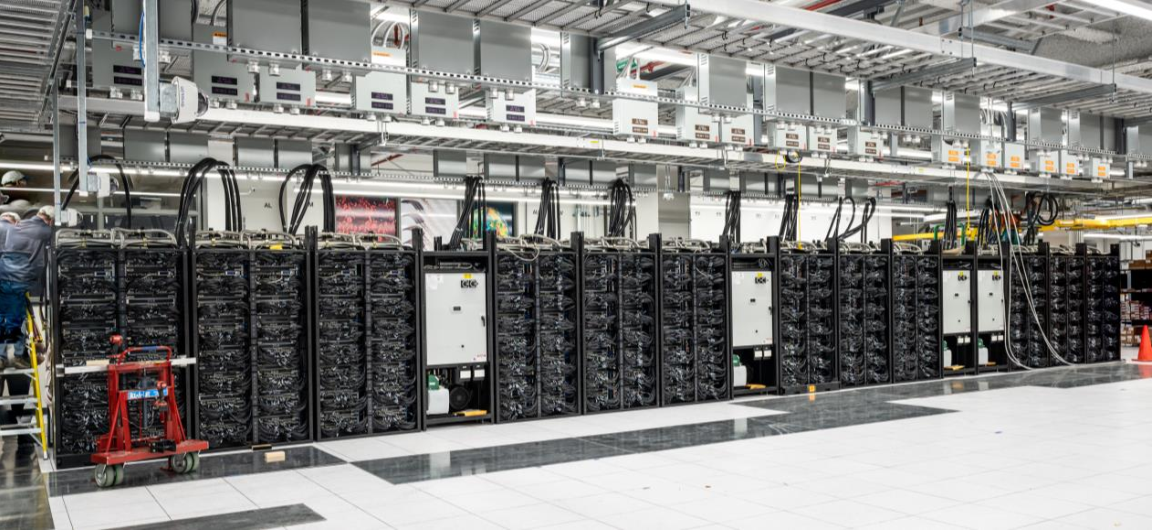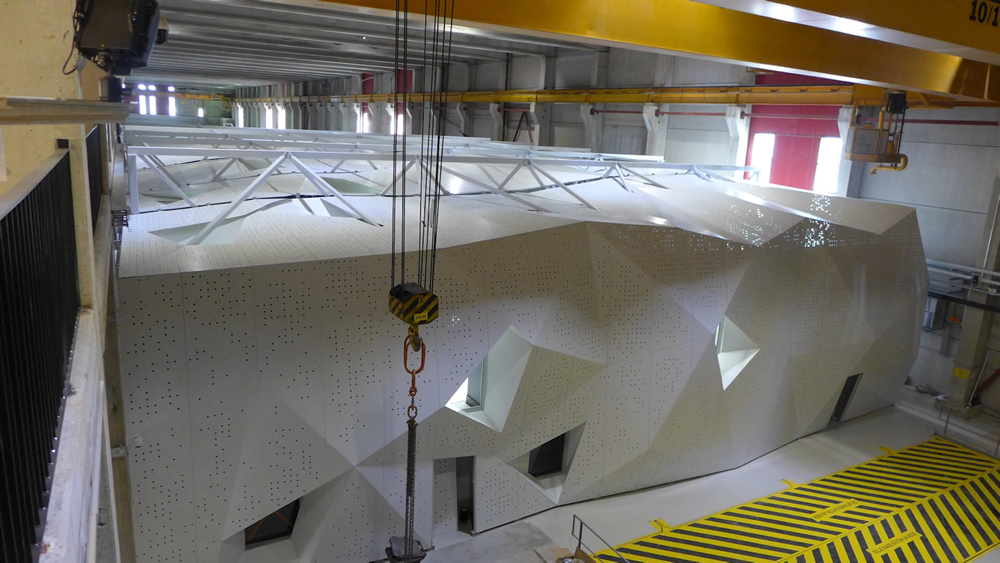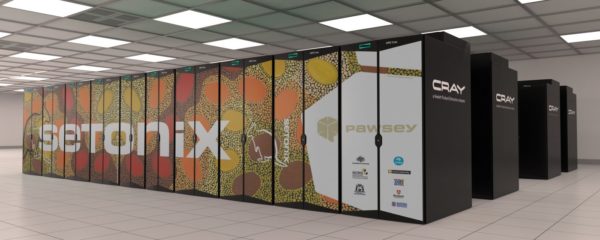AMD’s next-generation supercomputer GPU is on its way – and by all appearances, it’s about to make a name for itself. The AMD Radeon Instinct MI200 GPU (a successor to the MI100) will, over the next year, begin to power three massive systems on three continents: the United States’ exascale Frontier system; the European Union’s pre-exascale LUMI system; and Australia’s petascale Setonix system.
The new GPU – which began shipping to its first customers this summer – is based on AMD’s CDNA2 architecture and, unlike the PCIe MI100, uses a mezzanine form factor (akin to the SXM versions of Nvidia’s V100 and A100 GPUs). The MI200 will sport two dies – each rumored to have 110 compute units – connected via a passive interposer die, and up to 128GB of HBM2E DRAM. The MI200 is anticipated to deliver at least twice the performance of the single-die, 11.5-teraflops MI100, which had 120 compute units and 32GB of HBM2 memory. The MI200 will certainly be the first multi-chip module (MCM) GPU from AMD and also looks poised to be the first MCM GPU on the general market.
Frontier
AMD’s highest-profile customer for the MI200 might also be the first to launch: just a few weeks ago, it was revealed that the exascale Frontier supercomputer is undergoing installation at Oak Ridge National Laboratory (ORNL), with that installation scheduled to complete sometime this year or early next year. Frontier, built by HPE, will include more than 9,000 Cray EX nodes. Each node will include an AMD Epyc CPU and four MI200s, all slated to deliver more than 1.5 exaflops of computing power.

One of the other two announced U.S. exascale systems, the El Capitan system at Lawrence Livermore National Laboratory (LLNL), is also slated to use AMD CPUs and Radeon Instinct GPUs – but since El Capitan (expected to deliver two exaflops of peak performance) isn’t scheduled to launch until 2023, it is uncertain that it will use the MI200 or another version of Instinct.
For more details on Frontier, click here.
LUMI
If either of the other systems is going to beat Frontier to the punch, it’s likely to be EuroHPC’s LUMI system. EuroHPC – which operates as the European Union’s concerted supercomputing play – recently launched its first four systems, all of which are petascale. LUMI, however, is being termed a pre-exascale system, anticipated to deliver over 550 peak petaflops. LUMI’s CPU module was just installed in its gorgeous new home at Finland’s CSC, but the GPU module will be waiting until March – and that’s the one carrying next-generation AMD Instinct GPUs that will, presumably, be MI200s.

So far, LUMI is the only EuroHPC win for AMD’s GPUs, though its CPUs are also powering the Discoverer, Karolina, Meluxina and Vega systems.
For more details on LUMI, click here.
Setonix
Last but certainly not least will be the Setonix system at the Pawsey Supercomputing Centre in Australia. Setonix (named after the painfully cute quokka, or setonix brachyurus) is expected to deliver around 50 peak petaflops – a ways below the heights of Frontier or LUMI, but enough to put it in the top ten publicly ranked supercomputers right now and, when it launches, enough to make it what Pawsey believes will be the fastest public supercomputer in the Southern Hemisphere.

As with LUMI, the first stage of Setonix’s installation is currently underway, but the second stage is scheduled to be delivered “by mid-2022” for operation in the back half of that year. When complete, Setonix will make use of more than 200,000 AMD Milan CPU cores and over 750 next-generation AMD “MI-Next” GPUs (again, presumably the MI200). The system will also sport more than 548TB of aggregate memory and over 100PB of storage.
For more details on Setonix, click here.
The competition
Of course, AMD is entering a crowded room with the MI200 – and it’s only going to get more competitive, particularly on the multi-chip front. MCM GPUs are in the works from Intel (via its 47-tile “Ponte Vecchio” GPU) and from Nvidia (via GPUs with its new “Hopper” architecture). Multi-chip GPUs are, it seems, finally nascent in response to the yield and cost pressures facing advanced semiconductor manufacturing.
Looming over the MI200 wins are the wins from these competitors, both existing and forthcoming: Intel’s Ponte Vecchio GPU will (in tandem with Intel CPUs) power the exascale Aurora system, and Nvidia’s GPUs are powering NERSC’s Perlmutter system and EuroHPC’s Deucalion, Karolina, Leonardo, Meluxina and Vega systems. Meanwhile, Arm-based systems like Fugaku are eschewing GPUs entirely, and the lone undetailed EuroHPC system of the first batch – the troubled MareNostrum 5 – is purportedly delayed due to disagreements over vendors, with the EU preferring to procure from within its borders.
AMD, for its part, hasn’t even officially announced the name of the MI200 – but with SC21 mere weeks away and major customers launching systems in the next few months, the GPU seems ready to make its global debut.
Editor’s Note: Also joining the MI200 fray will be the 13.5-petaflops “Dardel” system at the PDC Center for High Performance Computing at the KTH Royal Institute of Technology in Sweden. Dardel will consist of an AMD Epyc-based CPU partition (made available in July) and a GPU partition equipped with nodes that will each sport four MI200s (scheduled for installation later this year with availability beginning in January 2022). Thanks to Mark Abraham on Twitter for pointing this out.





























































